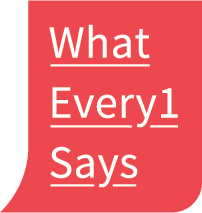(all)
Global Humanities | History of Humanities | Liberal Arts | Humanities and Higher Education | Humanities as Research Activity | Humanities Teaching & Curricula | Humanities and the Sciences | Medical Humanities | Public Humanities | Humanities Advocacy | Humanities and Social Groups | Value of Humanities | Humanities and Economic Value | Humanities Funding | Humanities Statistics | Humanities Surveys | "Crisis" of the Humanities
Humanities Organizations: Humanities Councils (U.S.) | Government Agencies | Foundations | Scholarly Associations
Humanities in: Africa | Asia (East) | Asia (South) | Australasia | Europe | Latin America | Middle East | North America: Canada - Mexico - United States | Scandinavia | United Kingdom
(all)
Lists of News Sources | Databases with News Archives | History of Journalism | Journalism Studies | Journalism Statistics | Journalism Organizations | Student Journalism | Data Journalism | Media Frames (analyzing & changing media narratives using "frame theory") | Media Bias | Fake News | Journalism and Minorities | Journalism and Women | Press Freedom | News & Social Media
(all)
Corpus Representativeness
Comparison paradigms for idea of a corpus: Archives as Paradigm | Canons as Paradigm | Editions as Paradigm | Corpus Linguistics as Paradigm
(all)
Artificial Intelligence | Big Data | Data Mining | Data Notebooks (Jupyter Notebooks) | Data Visualization (see also Topic Model Visualizations) | Hierarchical Clustering | Interpretability & Explainability (see also Topic Model Interpretation) | Mapping | Natural Language Processing | Network Analysis | Open Science | Reporting & Documentation Methods | Reproducibility | Sentiment Analysis | Social Media Analysis | Statistical Methods | Text Analysis (see also Topic Modeling) | Text Classification | Wikification | Word Embedding & Vector Semantics
Topic Modeling (all)
Selected DH research and resources bearing on, or utilized by, the WE1S project.
(all)
Distant Reading | Cultural Analytics | | Sociocultural Approaches | Topic Modeling in DH | Non-consumptive Use
Searchable version of bibliography on Zotero site
For WE1S developers: Biblio style guide | Biblio collection form (suggest additions) | WE1S Bibliography Ontology Outline
2133649
Statistics
1
chicago-fullnote-bibliography
50
date
desc
year
1
1
1
2642
https://we1s.ucsb.edu/wp-content/plugins/zotpress/
%7B%22status%22%3A%22success%22%2C%22updateneeded%22%3Afalse%2C%22instance%22%3Afalse%2C%22meta%22%3A%7B%22request_last%22%3A0%2C%22request_next%22%3A0%2C%22used_cache%22%3Atrue%7D%2C%22data%22%3A%5B%7B%22key%22%3A%22SWIMDFE4%22%2C%22library%22%3A%7B%22id%22%3A2133649%7D%2C%22meta%22%3A%7B%22creatorSummary%22%3A%22Wikipedia%22%2C%22parsedDate%22%3A%222019%22%2C%22numChildren%22%3A1%7D%2C%22bib%22%3A%22%26lt%3Bdiv%20class%3D%26quot%3Bcsl-bib-body%26quot%3B%20style%3D%26quot%3Bline-height%3A%201.35%3B%20padding-left%3A%201em%3B%20text-indent%3A-1em%3B%26quot%3B%26gt%3B%5Cn%20%20%26lt%3Bdiv%20class%3D%26quot%3Bcsl-entry%26quot%3B%26gt%3BWikipedia.%20%26lt%3Bi%26gt%3BConfusion%20Matrix%26lt%3B%5C%2Fi%26gt%3B%2C%202019.%20%26lt%3Ba%20class%3D%26%23039%3Bzp-ItemURL%26%23039%3B%20href%3D%26%23039%3Bhttps%3A%5C%2F%5C%2Fen.wikipedia.org%5C%2Fw%5C%2Findex.php%3Ftitle%3DConfusion_matrix%26amp%3Boldid%3D881721342%26%23039%3B%26gt%3Bhttps%3A%5C%2F%5C%2Fen.wikipedia.org%5C%2Fw%5C%2Findex.php%3Ftitle%3DConfusion_matrix%26amp%3Boldid%3D881721342%26lt%3B%5C%2Fa%26gt%3B.%20%26lt%3Ba%20title%3D%26%23039%3BCite%20in%20RIS%20Format%26%23039%3B%20class%3D%26%23039%3Bzp-CiteRIS%26%23039%3B%20data-zp-cite%3D%26%23039%3Bapi_user_id%3D2133649%26amp%3Bitem_key%3DSWIMDFE4%26%23039%3B%20href%3D%26%23039%3Bjavascript%3Avoid%280%29%3B%26%23039%3B%26gt%3BCite%26lt%3B%5C%2Fa%26gt%3B%20%26lt%3B%5C%2Fdiv%26gt%3B%5Cn%26lt%3B%5C%2Fdiv%26gt%3B%22%2C%22data%22%3A%7B%22itemType%22%3A%22book%22%2C%22title%22%3A%22Confusion%20matrix%22%2C%22creators%22%3A%5B%7B%22creatorType%22%3A%22author%22%2C%22name%22%3A%22Wikipedia%22%7D%5D%2C%22abstractNote%22%3A%22In%20the%20field%20of%20machine%20learning%20and%20specifically%20the%20problem%20of%20statistical%20classification%2C%20a%20confusion%20matrix%2C%20also%20known%20as%20an%20error%20matrix%2C%20is%20a%20specific%20table%20layout%20that%20allows%20visualization%20of%20the%20performance%20of%20an%20algorithm%2C%20typically%20a%20supervised%20learning%20one%20%28in%20unsupervised%20learning%20it%20is%20usually%20called%20a%20matching%20matrix%29.%20Each%20row%20of%20the%20matrix%20represents%20the%20instances%20in%20a%20predicted%20class%20while%20each%20column%20represents%20the%20instances%20in%20an%20actual%20class%20%28or%20vice%20versa%29.%20The%20name%20stems%20from%20the%20fact%20that%20it%20makes%20it%20easy%20to%20see%20if%20the%20system%20is%20confusing%20two%20classes%20%28i.e.%20commonly%20mislabeling%20one%20as%20another%29.%22%2C%22date%22%3A%222019%22%2C%22language%22%3A%22en%22%2C%22ISBN%22%3A%22%22%2C%22url%22%3A%22https%3A%5C%2F%5C%2Fen.wikipedia.org%5C%2Fw%5C%2Findex.php%3Ftitle%3DConfusion_matrix%26oldid%3D881721342%22%2C%22collections%22%3A%5B%5D%2C%22dateModified%22%3A%222019-07-27T21%3A33%3A48Z%22%2C%22tags%22%3A%5B%7B%22tag%22%3A%22Data%20science%22%7D%2C%7B%22tag%22%3A%22Statistics%22%7D%2C%7B%22tag%22%3A%22Topic%20model%20optimization%22%7D%5D%7D%7D%2C%7B%22key%22%3A%228KT424LE%22%2C%22library%22%3A%7B%22id%22%3A2133649%7D%2C%22meta%22%3A%7B%22creatorSummary%22%3A%22Narkhede%22%2C%22parsedDate%22%3A%222018%22%2C%22numChildren%22%3A0%7D%2C%22bib%22%3A%22%26lt%3Bdiv%20class%3D%26quot%3Bcsl-bib-body%26quot%3B%20style%3D%26quot%3Bline-height%3A%201.35%3B%20padding-left%3A%201em%3B%20text-indent%3A-1em%3B%26quot%3B%26gt%3B%5Cn%20%20%26lt%3Bdiv%20class%3D%26quot%3Bcsl-entry%26quot%3B%26gt%3BNarkhede%2C%20Sarang.%20%26lt%3Bi%26gt%3BUnderstanding%20Confusion%20Matrix%26lt%3B%5C%2Fi%26gt%3B%2C%202018.%20%26lt%3Ba%20class%3D%26%23039%3Bzp-ItemURL%26%23039%3B%20href%3D%26%23039%3Bhttps%3A%5C%2F%5C%2Ftowardsdatascience.com%5C%2Funderstanding-confusion-matrix-a9ad42dcfd62%26%23039%3B%26gt%3Bhttps%3A%5C%2F%5C%2Ftowardsdatascience.com%5C%2Funderstanding-confusion-matrix-a9ad42dcfd62%26lt%3B%5C%2Fa%26gt%3B.%20%26lt%3Ba%20title%3D%26%23039%3BCite%20in%20RIS%20Format%26%23039%3B%20class%3D%26%23039%3Bzp-CiteRIS%26%23039%3B%20data-zp-cite%3D%26%23039%3Bapi_user_id%3D2133649%26amp%3Bitem_key%3D8KT424LE%26%23039%3B%20href%3D%26%23039%3Bjavascript%3Avoid%280%29%3B%26%23039%3B%26gt%3BCite%26lt%3B%5C%2Fa%26gt%3B%20%26lt%3B%5C%2Fdiv%26gt%3B%5Cn%26lt%3B%5C%2Fdiv%26gt%3B%22%2C%22data%22%3A%7B%22itemType%22%3A%22book%22%2C%22title%22%3A%22Understanding%20Confusion%20Matrix%22%2C%22creators%22%3A%5B%7B%22creatorType%22%3A%22author%22%2C%22firstName%22%3A%22Sarang%22%2C%22lastName%22%3A%22Narkhede%22%7D%5D%2C%22abstractNote%22%3A%22When%20data%20is%20gathered%2C%20after%20data%20cleaning%2C%20pre-processing%20and%20wrangling%2C%20the%20first%20step%20is%20to%20feed%20it%20to%20an%20outstanding%20model%20and%20of%20course%2C%20get%20output%20in%20probabilities.%20But%20hold%20on%21%20How%20in%20the%20hell%20can%20one%20measure%20the%20effectiveness%20of%20their%20model%3F%20The%20better%20the%20effectiveness%2C%20the%20better%20the%20performance%2C%20and%20that%5Cu2019s%20exactly%20what%20we%20want.%20And%20it%20is%20where%20the%20Confusion%20matrix%20comes%20into%20the%20limelight.%20Confusion%20Matrix%20is%20a%20performance%20measurement%20for%20machine%20learning%20classification.%20This%20blog%20aims%20to%20answer%20following%20questions%3A%20What%20the%20confusion%20matrix%20is%20and%20why%20you%20need%20it%3F%20How%20to%20calculate%20Confusion%20Matrix%20for%20a%202-class%20classification%20problem%3F%22%2C%22date%22%3A%222018%22%2C%22language%22%3A%22en%22%2C%22ISBN%22%3A%22%22%2C%22url%22%3A%22https%3A%5C%2F%5C%2Ftowardsdatascience.com%5C%2Funderstanding-confusion-matrix-a9ad42dcfd62%22%2C%22collections%22%3A%5B%5D%2C%22dateModified%22%3A%222019-07-27T21%3A40%3A47Z%22%2C%22tags%22%3A%5B%7B%22tag%22%3A%22Data%20science%22%7D%2C%7B%22tag%22%3A%22Statistics%22%7D%2C%7B%22tag%22%3A%22Topic%20model%20optimization%22%7D%5D%7D%7D%2C%7B%22key%22%3A%22SQR5EAAL%22%2C%22library%22%3A%7B%22id%22%3A2133649%7D%2C%22meta%22%3A%7B%22creatorSummary%22%3A%22Randles%20et%20al.%22%2C%22parsedDate%22%3A%222017%22%2C%22numChildren%22%3A0%7D%2C%22bib%22%3A%22%26lt%3Bdiv%20class%3D%26quot%3Bcsl-bib-body%26quot%3B%20style%3D%26quot%3Bline-height%3A%201.35%3B%20padding-left%3A%201em%3B%20text-indent%3A-1em%3B%26quot%3B%26gt%3B%5Cn%20%20%26lt%3Bdiv%20class%3D%26quot%3Bcsl-entry%26quot%3B%26gt%3BRandles%2C%20Bernadette%20M.%2C%20Irene%20V.%20Pasquetto%2C%20Milena%20S.%20Golshan%2C%20and%20Christine%20L.%20Borgman.%20%26%23x201C%3BUsing%20the%20Jupyter%20Notebook%20as%20a%20Tool%20for%20Open%20Science%3A%20An%20Empirical%20Study.%26%23x201D%3B%20In%20%26lt%3Bi%26gt%3B2017%20ACM%5C%2FIEEE%20Joint%20Conference%20on%20Digital%20Libraries%20%28JCDL%29%26lt%3B%5C%2Fi%26gt%3B%2C%201%26%23x2013%3B2%2C%202017.%20%26lt%3Ba%20class%3D%26%23039%3Bzp-DOIURL%26%23039%3B%20href%3D%26%23039%3Bhttps%3A%5C%2F%5C%2Fdoi.org%5C%2F10.1109%5C%2FJCDL.2017.7991618%26%23039%3B%26gt%3Bhttps%3A%5C%2F%5C%2Fdoi.org%5C%2F10.1109%5C%2FJCDL.2017.7991618%26lt%3B%5C%2Fa%26gt%3B.%20%26lt%3Ba%20title%3D%26%23039%3BCite%20in%20RIS%20Format%26%23039%3B%20class%3D%26%23039%3Bzp-CiteRIS%26%23039%3B%20data-zp-cite%3D%26%23039%3Bapi_user_id%3D2133649%26amp%3Bitem_key%3DSQR5EAAL%26%23039%3B%20href%3D%26%23039%3Bjavascript%3Avoid%280%29%3B%26%23039%3B%26gt%3BCite%26lt%3B%5C%2Fa%26gt%3B%20%26lt%3B%5C%2Fdiv%26gt%3B%5Cn%26lt%3B%5C%2Fdiv%26gt%3B%22%2C%22data%22%3A%7B%22itemType%22%3A%22conferencePaper%22%2C%22title%22%3A%22Using%20the%20Jupyter%20Notebook%20as%20a%20Tool%20for%20Open%20Science%3A%20An%20Empirical%20Study%22%2C%22creators%22%3A%5B%7B%22creatorType%22%3A%22author%22%2C%22firstName%22%3A%22Bernadette%20M.%22%2C%22lastName%22%3A%22Randles%22%7D%2C%7B%22creatorType%22%3A%22author%22%2C%22firstName%22%3A%22Irene%20V.%22%2C%22lastName%22%3A%22Pasquetto%22%7D%2C%7B%22creatorType%22%3A%22author%22%2C%22firstName%22%3A%22Milena%20S.%22%2C%22lastName%22%3A%22Golshan%22%7D%2C%7B%22creatorType%22%3A%22author%22%2C%22firstName%22%3A%22Christine%20L.%22%2C%22lastName%22%3A%22Borgman%22%7D%5D%2C%22abstractNote%22%3A%22As%20scientific%20work%20becomes%20more%20computational%20and%20data-intensive%2C%20research%20processes%20and%20results%20become%20more%20difficult%20to%20interpret%20and%20reproduce.%20In%20this%20poster%2C%20we%20show%20how%20the%20Jupyter%20notebook%2C%20a%20tool%20originally%20designed%20as%20a%20free%20version%20of%20Mathematica%20notebooks%2C%20has%20evolved%20to%20become%20a%20robust%20tool%20for%20scientists%20to%20share%20code%2C%20associated%20computation%2C%20and%20documentation.%22%2C%22date%22%3A%222017%22%2C%22proceedingsTitle%22%3A%222017%20ACM%5C%2FIEEE%20Joint%20Conference%20on%20Digital%20Libraries%20%28JCDL%29%22%2C%22conferenceName%22%3A%222017%20ACM%5C%2FIEEE%20Joint%20Conference%20on%20Digital%20Libraries%20%28JCDL%29%22%2C%22language%22%3A%22en%22%2C%22DOI%22%3A%2210.1109%5C%2FJCDL.2017.7991618%22%2C%22ISBN%22%3A%22%22%2C%22url%22%3A%22%22%2C%22collections%22%3A%5B%5D%2C%22dateModified%22%3A%222020-09-03T05%3A49%3A56Z%22%2C%22tags%22%3A%5B%7B%22tag%22%3A%22Data%20notebooks%22%7D%2C%7B%22tag%22%3A%22Data%20science%22%7D%2C%7B%22tag%22%3A%22Data%20visualization%22%7D%2C%7B%22tag%22%3A%22Machine%20learning%22%7D%2C%7B%22tag%22%3A%22Open%20science%22%7D%2C%7B%22tag%22%3A%22Statistics%22%7D%5D%7D%7D%5D%7D
Wikipedia. Confusion Matrix, 2019. https://en.wikipedia.org/w/index.php?title=Confusion_matrix&oldid=881721342. Cite
Narkhede, Sarang. Understanding Confusion Matrix, 2018. https://towardsdatascience.com/understanding-confusion-matrix-a9ad42dcfd62. Cite
Randles, Bernadette M., Irene V. Pasquetto, Milena S. Golshan, and Christine L. Borgman. “Using the Jupyter Notebook as a Tool for Open Science: An Empirical Study.” In 2017 ACM/IEEE Joint Conference on Digital Libraries (JCDL), 1–2, 2017. https://doi.org/10.1109/JCDL.2017.7991618. Cite


